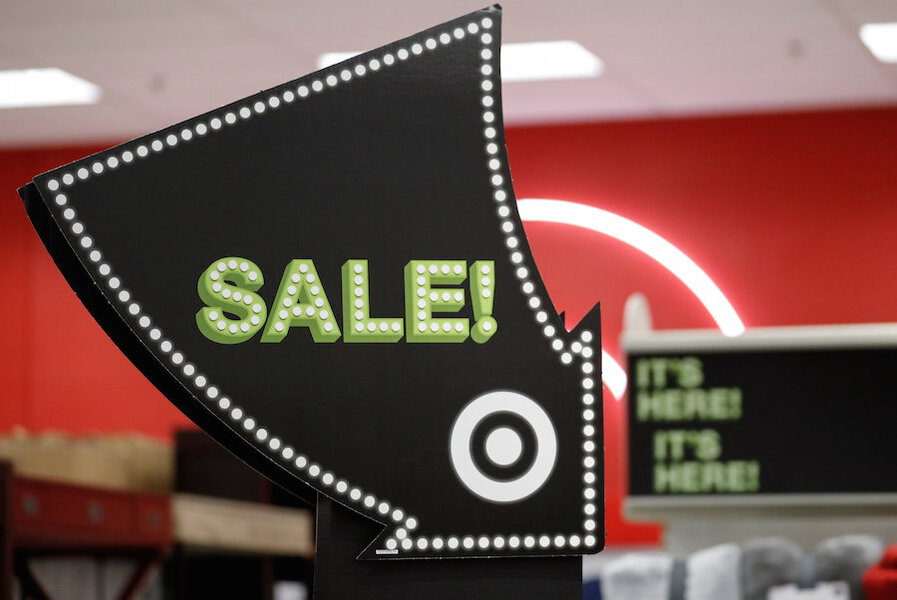Don’t get tricked by retailers’ sale schemes
Loading...
If you see a huge price markdown while shopping, you may feel compelled to make a snap purchase. That’s what retailers want you to do.
Stores have a habit of making sales look a lot better than they are. So how do you avoid falling for the facade of a great deal? Here’s what you should know.
What’s the deal?
A product on sale often has a sale price and a regular price, so most shoppers generally form their opinions of the deal based on the difference between the prices.
But some prices may not be what they seem.
One sale tactic used by retailers is showing the MSRP, or manufacturer’s suggested retail price. It is the price that manufacturers suggest retailers ask for a product. Manufacturers set MSRPs because they don’t want their items to be discounted too much, says Rebecca Hamilton, a marketing professor at Georgetown University’s McDonough School of Business.
But retailers may charge a lower price as long as it’s within the manufacturer’s guidelines for the lowest possible price. “The MSRP is always the highest price you’ll see, and maybe it’s never sold for that price,” Hamilton says.
Another pricing trick drew attention in early December 2016 when Los Angeles City Attorney Mike Feuer announced lawsuits against J.C. Penney, Kohl’s, Macy’s and Sears over alleged false reference pricing schemes.
The retailers allegedly used false regular prices (also called reference prices) to “mislead customers into believing items were being sold at significant discounts” during a sale, according to the office’s news release. It also said that under California law, retailers can’t advertise a former price unless that price was “the prevailing market price within three months of the advertisement,” or unless the retailer stipulates the date when the former price was charged. The lawsuits claimed that the retailers usually sold products at the sale prices, not at the reference prices.
So why do some retailers want you to see a higher original price?
“The highest price the consumer sees helps them develop their idea of how valuable something is,” Hamilton says. “… It’s kind of like when you move to a new city and you don’t know how much you’re going to have to pay for an apartment. You see what they charge and then you develop your beliefs about what you’re willing to pay.”
How to beat the system
It’s important to do due diligence while shopping. Here are a few ways to avoid getting duped:
- Use a price history tracker. Websites such as CamelCamelCamel and MyAlerts offer the price history of a product so that you can see if it was mostly sold at the regular price or at the sale price. Use these sites on a one-off basis to search for products or sign up for a free account to receive tracking notifications.
- Sign up for pricing alerts. Slice Watch is a browser extension that can be added to Google Chrome. When you visit eligible retailers after signing into Chrome, the extension gives a pop-up option to “watch” a product. If that item drops in price, you’ll immediately receive an email notification. Another similar tool is Keepa, an Amazon-specific browser extension that works with Firefox and Chrome.
- Compare prices at multiple retailers. Search engines such as Google or Yahoo can help you look for the item and compare its price at multiple retailers’ websites. We tested this strategy for the Keurig K55 brewing system, which was advertised on sale for $119.99 at Macy’s and Kohl’s in late November. But the Macy’s website reflected a regular price of $174.99 for the coffee maker, while Kohl’s showed $139.99. Don’t let the size of the supposed discount ($55 at Macy’s compared to $20 at Kohl’s) sway your decision.
- Think for yourself. Ultimately, you should be the one to recognize if a deal is worth it, instead of relying on a retailer to say it is a good deal. Hamilton recommends looking at the price you’d pay — if you spend that amount on one item, you won’t be able to spend it on anything else. Is the cost still worth it to you?
And if at all possible, ignore those regular prices.
Courtney Jespersen is a staff writer at NerdWallet, a personal finance website. Email: courtney@nerdwallet.com. Twitter: @courtneynerd.
This story originally appeared on NerdWallet.







